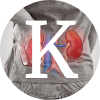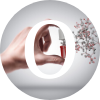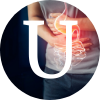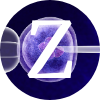The best of 2019: an A–Z of real-world evidence research

As 2019 comes to a close, our Editor has collated an A to Z of some of the top research topics and field developments from the year, which we brought to you on The Evidence Base®.
As 2019 comes to a close, we have collated an A to Z of some of the top research topics and field developments from the year, which we brought to you on The Evidence Base®.
We hope you enjoy and encourage you to share your thoughts on your real-world evidence highlights from 2019!
 Artificial intelligence
Artificial intelligence
Artificial intelligence (AI) continues to be a hot topic, with research demonstrating that AI-based systems and learning algorithms offer comparable diagnostic accuracy to healthcare physicians and may even allow for untrained practitioners to effectively diagnose conditions. This year, we have seen groundbreaking advancements and potential for AI in a range of indications including cancer care, ophthalmology and kidney disease.
 Baclofen
Baclofen
A fascinating retrospective report recently suggested that individuals with chronic kidney disease prescribed a high dose of baclofen are more likely to be hospitalized for severe confusion or disorientation compared with individuals not prescribed the drug, or prescribed a low drug dose. The study investigated the 30-day encephalopathy-related hopsital admissions rates amongst 15,942 patients, over the age of 65, with chronic kidney disease.
 Combination therapy
Combination therapy
This year we have seen various assessments of combination drug therapies for a range of indications including bowel cancer, lung transplant surgeries and acute myeloid leukemia. Oftentimes, these combination therapies have been observed to be more beneficial for patients compared with standard or monotherapy options, however, this has not always been the case, as researchers from the Japan Cardiovascular Research Foundation (Osaka, Japan) demonstrated concerning heart failure therapies.
 Duodenoscopes
Duodenoscopes
Earlier this year, following the results of real-world, post-market surveillance studies, the US FDA issued new guidance concerning the preferable use of partly disposable duodenoscope devices — instead of fully repurposable devices — to reduce infection transmission.
 EHRs
EHRs
Electronic health records (EHRs) have received much attention this year, with research demonstrating their poor usability — as perceived by users — how this may be contributing to physician burnout, the importance of integrating EHRs with electronic data capture and whether EHRs are in fact even meaningfully employed by private healthcare providers.
 Flu
Flu
Researchers from Aarhus University Hospital (Denmark) produced some fascinating research this summer, demonstrating that amongst 89,818 elderly patients — over the age of 65 years — who had survived hospitalization on an intensive care unit between 2005 and 2015, those who had received flu vaccination prior to hospitalization had lower morbidity, blood clot and cranial bleeding risks compared with unvaccinated patients.
 Glasdegib
Glasdegib
In a novel study, an international team of researchers from Purple Squirrel Economics, Pfizer (both NY, USA) and the Institute of Health & Wellbeing (Glasgow, UK) employed indirect and simulated treatment comparison methods to assess the comparative effectiveness of combination glasdegib and low-dose cytarabine for older patients with acute myeloid leukemia. The results of the study suggest that patients’ overall survival on combination glasdegib and low-dose cytarabine was significantly greater compared with patients who received either azacitidine or decitabine monotherapies.
 HIV
HIV
Earlier this year, researchers from Rutgers University (NJ, USA) published a systematic review suggesting that HIV patients who receive non-judgmental, empathetic care from their primary health care providers are more likely to adhere to their life-saving drug regimes. The impact of HIV on patients’ heart failure risk has also been investigated this year, as have the effects of voluntary licenses on increasing patients’ access to essential HIV treatments.
 ISPOR
ISPOR
This year The Evidence Base made its premier at the ISPOR world meeting (18—22 May 2019, LA, USA) and then partnered with ISPOR to bring you live coverage of the 2019 Europe meeting (2—6 November; Copenhagen, Denmark)! We brought you daily video updates, abstract highlights, plenary exclusives and have a whole host of video interviews and panel discussion coming soon!
 Japan
Japan
In September, the Office of Health Economics (London, UK) released a new consulting report evaluating the processes by which real-world data are accessed, generated and used to produce real-world evidence in Japan. These were compared with real-world evidence data governance arrangements in place in Australia, France, Germany, Italy, Sweden, the Netherlands, the UK, the USA and South Korea.
 Kidney disease
Kidney disease
This year, much research has investigated the association between baclofen dose and encephalopathy risk in elder individuals with kidney disease, the risks of acute kidney injury associated with increasing hypertension medications at the times of patients’ hospital discharge, and even how AI may be employed to allow for optimal dialysis treatment start times.
 Label expansion
Label expansion
Following the 3rd Real-World Evidence Forum (15–16 July, PA, USA), we caught up with Miriam Fenton (Sanofi Genzyme; MA, USA) to discuss the importance and implications of real-world evidence use in label expansion, and the cost and time benefits this may yield, which may allow greater therapy access for wider patient populations, particularly for rare diseases and oncology indications.
 Multiple sclerosis
Multiple sclerosis
Earlier this year, researchers from the University of Pittsburgh (PA, USA) highlighted the worrying trends in list prices, market shares and out-of-pocket spending on disease-modifying therapies for multiple sclerosis patients who are beneficiaries of Medicare Part D; these individuals have faced a seven-fold increase in personal costs for drugs over the last decade. Watch out for our exclusive interview with the study authors coming soon!
 Nanomedicine
Nanomedicine
Despite the enormous potential of nanodrugs, their successful translation from bench to bedside remains challenging. In this editorial, originally published in the journal Nanomedicine, Rita Bosetti and Stephen Jones (both Center for Outcomes Research; TX, USA) explored the importance of comprehensive, standardized cost—effectiveness analyses to the development of nano-informed drugs and the efficient allocation of scarce financial resources.
 Orphan drugs
Orphan drugs
Orphan drugs are drugs indicated for rare diseases; in the USA, each of these drugs are used to treat less than 200,000 patients. At the ISPOR world 2019 meeting, we caught up with James Chambers (Tufts Medical Center; MA, USA) to discuss the specific challenges faced by payers and regulators for orphan drugs, estimating their value and cost—effectiveness.
 PROs
PROs
Patient-reported outcomes (PROs) can function as invaluable sources of clinical data and yield novel insights. Following the 2019 ISPOR world meeting, Stephane Regnier discussed the benefits and challenges associated with PRO data. More recently, Janssen (NY, USA) employed wearable devices to reimagine traditional clinical trials and researchers suggested PROs could function as useful prognostic factors for cancer.
 QALYs
QALYs
The use of the quality-adjusted life year (QALY) as a value assessment parameter is highly controversial and much heterogeneity exists between stakeholders’ opinions on this. Earlier this year, we spoke with Eleanor Perfetto (National Health Council; DC, USA) to further understand the controversy surrounding the QALY and have been particularly interested the use of QALYs in cancer therapy assessments.
 ‘R’ modeling
‘R’ modeling
R software offers great potential to improve transparency associated with model sharing and checking, increase model development speed and advance the field of health economics and statistical modeling. At ISPOR world 2019, we spoke with Joseph Levy (Johns Hopkins University; MD, USA) about the benefits R can offer for excelling in economic model development and the reluctance in the field towards R adoption over Excel.
 Statins
Statins
Statins are widely prescribed, essential cholesterol-lowering pharmacotherapies. This year, researchers have employed real-world observational data to demonstrate associations between statin use, dementia risk and Type 2 diabetes onset.
 Treatment sequencing
Treatment sequencing
This year saw the launch of The Evidence Base’s first editorial in focus feature, in partnership with Oncology Central and the journal Future Oncology. We brought you exclusive interviews, opinions and journal content surrounding recent developments and challenges in treatment sequencing in oncology, as well as the future promise of this field.
 Ulcerative colitis
Ulcerative colitis
Ulcerative Colitis is one of the two main forms of inflammatory bowel disease, manifesting in inflammation and ulceration of the inner lining of the colon and rectum. In March, Entyvio® was demonstrated to be superior to Humira® in the first head-to-head biologic clinical study in ulcerative colitis. Later, in October, real-world data supported vedolizumab use in patients with ulcerative colitis or Crohn’s disease.
 Value-based decision making
Value-based decision making
When making drug coverage decisions and working to expand patients’ access to healthcare, it is critical to consider more than just acquisition costs associated with therapies; considering the value delivered by the treatments is of utmost importance. Following HTAi 2019 (15–19 June, Cologne, Germany) we spoke with Anke-Peggy Holtorf (Health Outcomes Strategies; Basel, Switzerland) about the current and future states of value-based decision making and a tool to help countries with expanding healthcare coverages make listing, purchasing or tendering decisions in a more balanced manner, considering more than acquisition costs only. We also heard from Richard Gliklich (OM1; MA, USA) about his presentation from DIA 2019 (23–27 June, CA, USA) on the necessity and importance of value-based contracting.
 Wearables
Wearables
This year has seen great advances in the use of wearables as critical sources of data and patient-reported outcomes, as Stephane Regnier (Novartis, Basel, Switzerland) explained. More recently, we have seen wearables allow researchers to reimage traditional clinical trial designs and suggest a link between poor sleep and heart disease risk.
 Xeljanz®
Xeljanz®
Xeljanz®, developed by Pfizer (NY, USA), is a JAK inhibitor used for the treatment of rheumatoid arthritis — a long-term inflammatory condition, which manifests in pain, swelling and joint stiffness. Recently, the Institute for Clinical and Economic Review (ICER; MA, USA) released a new report detailing real-world evidence assessing the economic value and comparative effectiveness of various JAK inhibitors for this indication, including Rinvoq® and Humira, alongside Xeljanz.
 Yescarta
Yescarta
Yescarta is one of only two chimeric antigen T-cell receptor therapies approved for use in relapsed or refractory diffuse large B-cell lymphoma patients, who have received more than 2 years of prior systemic therapies. This year, researchers described the demographic characteristics of Medicare beneficiaries receiving Yescarta for this indication, and associated healthcare utilization, costs and outcomes pre- and post-therapy delivery.
 Zolgensma®
Zolgensma®
This year saw Zolgensma® — the first and only gene therapy to be approved by the US FDA for the treatment of spinal muscular atrophy — be made available under a number of innovative access plans, including pay-over-time options up to 5 years and outcomes-based agreements up to 5 years.
Want regular updates on the latest real-world evidence news straight to your inbox? Become a member on The Evidence Base® today>>>
